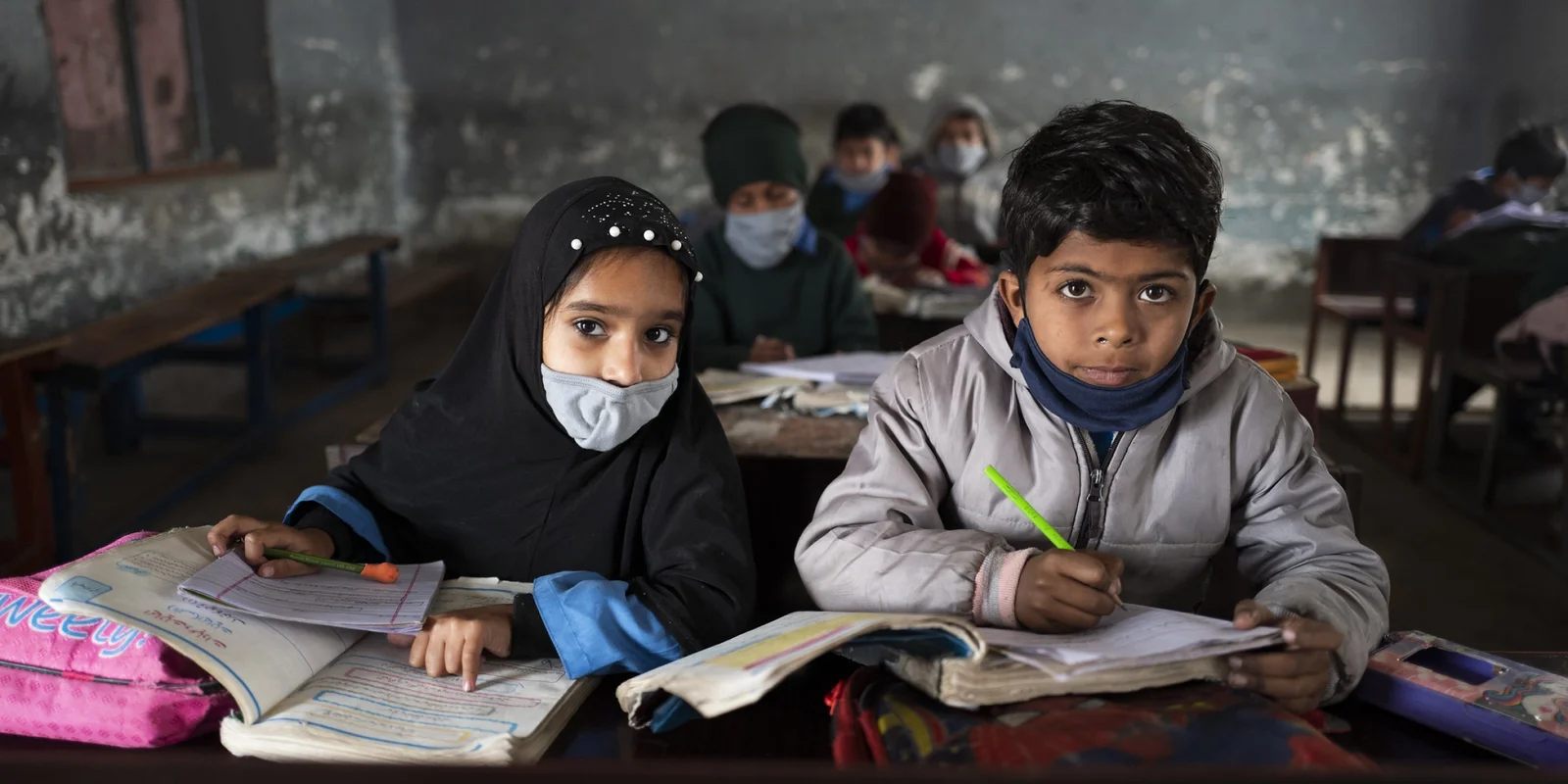Education in Pakistan remains a complex and vital issue as the country navigates its social and economic challenges in 2025. Despite its designation as free and compulsory for children aged 5 to 16, the reality on the ground tells a different story. Even as the government proclaims progress and emergency interventions, millions of children stay out of school, meaning Education in Pakistan is far from universal. This blog post examines the current landscape—financing, access, quality, regional disparities, and innovations that offer pathways forward.
Funding and National Priorities
According to the Pakistan Economic Survey for fiscal year 2024–25, cumulative education spending by the federal and provincial governments was a mere 0.8% of GDP, down from around 0.9% previously. Save the Children reports that government spending has dropped significantly since 2018, when it stood near 2% of GDP, and today nearly 38% of school-age children are out of school. This chronic underfunding starkly contrasts with the UN-recommended benchmark of 4–6% of GDP for education expenditure. The result is a contagion of inadequate infrastructure, poor teacher capacity, and insufficient learning environments across the country.
Access, Equity, and Regional Disparities
Pakistan faces severe challenges in education access and equity. UNICEF data reveals that while 10.7 million boys are enrolled at primary level, only 8.6 million girls attend, with dropout rates increasing sharply at lower secondary levels. In provinces like Balochistan and Sindh, the disparity is even steeper. For example, 75% of girls in Balochistan are out of school, and in Sindh, more than half of the poorest girls (58%) remain unenrolled.
Multiple sources place the number of out-of-school children in Pakistan around 22.8 million. Moreover, literacy stands at just 60–63%, with male rates near 68% and female rates lingering around 52–53%. This gap is echoed in a wide gender divide: female literacy roughly half that of males, creating significant gender inequality in educational attainment.
These figures also obscure vast regional inequalities. District-level data shows urban centers like Islamabad (≈88%), Karachi Central (85%), and Lahore (77%) fare far better than rural and remote regions—Torghar in Khyber Pakhtunkhwa records literacy below 20%. This urban-rural dichotomy demands targeted, region-specific policies rather than one-size-fits-all reforms.
Quality of Education: Learning Outcomes and Infrastructure
Even among children who are enrolled, learning outcomes are poor. The World Bank’s concept of “learning poverty” reveals that a staggering 77% of 10-year-olds cannot read a basic text. Schools often lack basic amenities—with one report citing that 34% of schools have no electricity, and 21% lack clean water.
Teacher capacity is another urgent bottleneck: primary schools average one teacher for every 50 students, and trained, motivated educators are few. Curricular rigidity, rote-based learning, and weak pedagogical approaches further derail deep learning and critical thinking.
Moreover, repeated disruptions caused by climate shocks—like the catastrophic floods of 2022 that damaged over 30,000 schools, affecting millions of learners—and heatwave-driven closures during 2024 have severely interrupted learning continuity.
Response, Reform, and Innovation
Recognizing these crises, the government declared an “education emergency” in May 2024, citing low literacy and alarmingly high dropout figures. Development budgets in FY 2025 allocated funds for projects including “Daanish schools”, adding Rs 5.5 billion to targeted initiatives.
In Sindh, the People’s School Program (PSP)—a public-private partnership managed by the Sindh Education Foundation—has been expanding quality English-medium schools focused on STEM, IT, and life skills, with 35 schools serving over 25,000 students as of 2025.
Non-governmental efforts also play a critical role. The Citizens Foundation now operates 2,033 school units, educating over 301,000 underprivileged children, and employing more than 14,700 women as teachers and principals—a powerful example of impact and gender-forward employment. At the grassroots, initiatives like Bagh-e-Sakina in Karachi promote activity-based learning and critical thinking in low-income schools, offering a more inclusive, empathetic pedagogy.
E-learning and digital interventions are also gaining ground. Post-pandemic, mobile learning expanded via 3G/4G coverage, online platforms, and government-telco collaboration to subsidize connectivity and train teachers. The HEC’s engagement with Coursera and other e-learning initiatives continues to broaden access to high-quality content.
Future Directions and Recommendations
Looking ahead, Education in Pakistan must be reimagined through several complementary lenses:
- Significantly increase public spending—toward at least 4% of GDP—to restore infrastructure, recruit and train teachers, and ensure access.
- Close gender and regional gaps by offering conditional stipends (e.g., Ehsaas Education Stipend), building girls’ schools in underserved areas, and enforcing compulsory education.
- Invest in learning quality, not just enrollment—through teacher development, active learning curricula, assessment reform, and supportive supervision.
- Enable resilience to disasters by designing climate-adaptive infrastructure and contingency plans to maintain learning during crises.
- Scale proven models—such as PSP in Sindh, TCF’s model, and digital platforms—that combine local management, community engagement, and sustained accountability.
Conclusion
As Pakistan enters the second half of the 2020s, Education in Pakistan stands at a critical juncture. The system grapples with stark underinvestment, entrenched inequities, and poor learning outcomes. Yet, hope flickers through emergency declarations, innovative partnerships, and digital outreach. If the momentum holds—anchored in equitable funding, inclusive access, and quality learning—Pakistan can move closer to achieving its Vision 2025 human-capital goals. Only by empowering every child, especially the most marginalized, can the nation unlock its full potential. Education in Pakistan, in 2025, remains both a profound challenge and an urgent opportunity.

